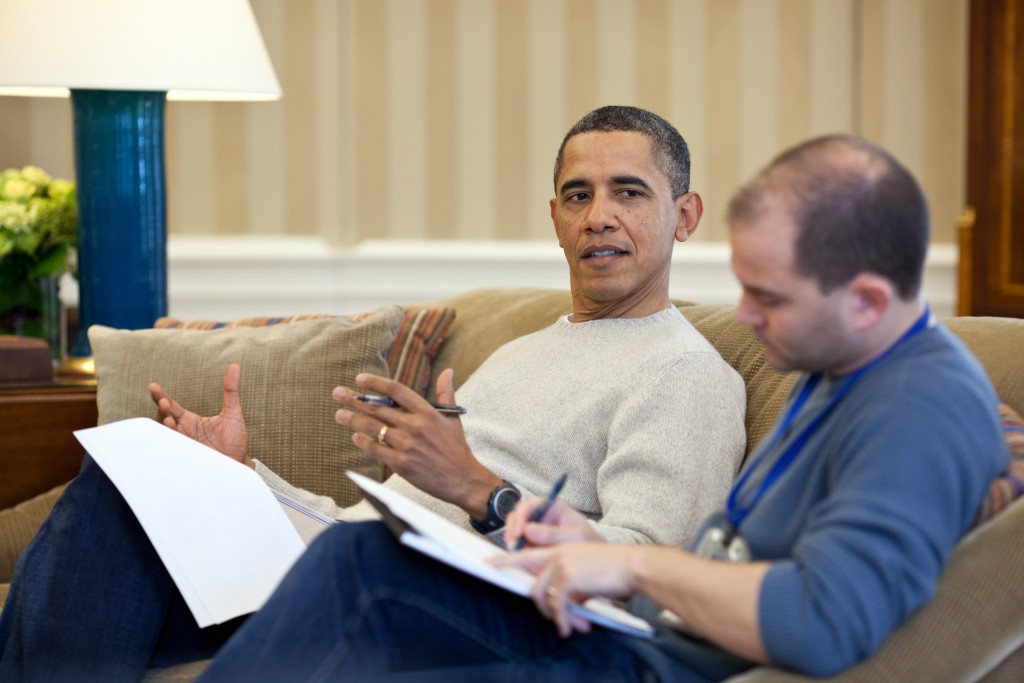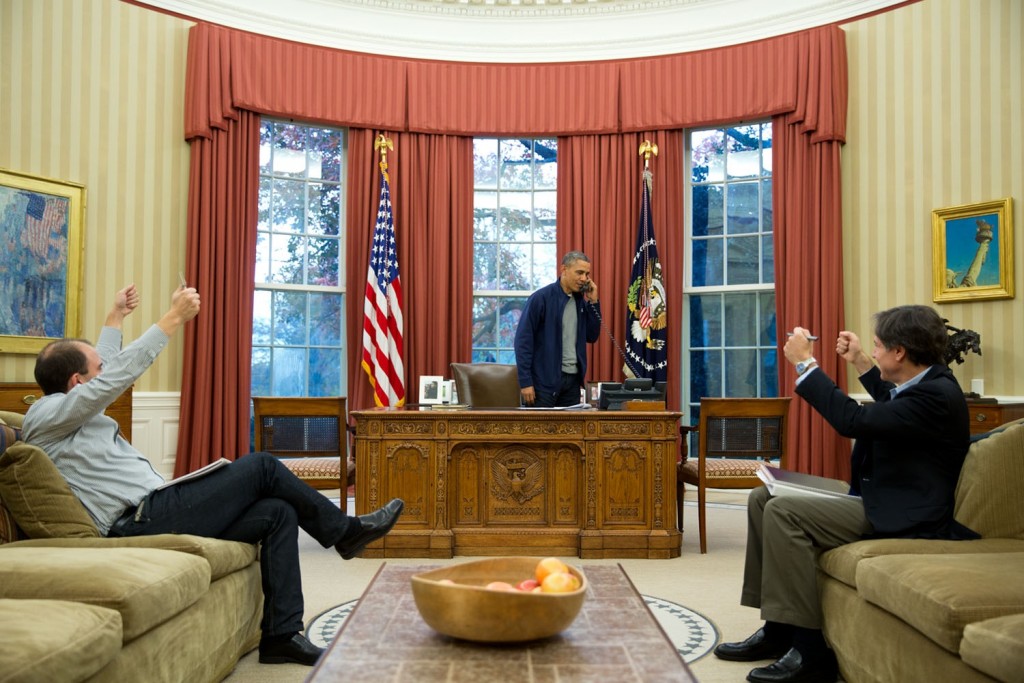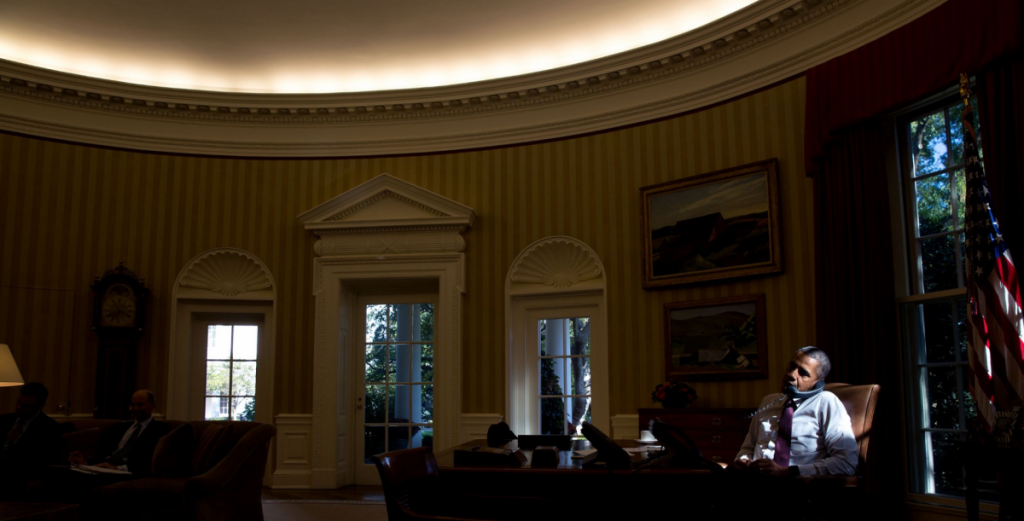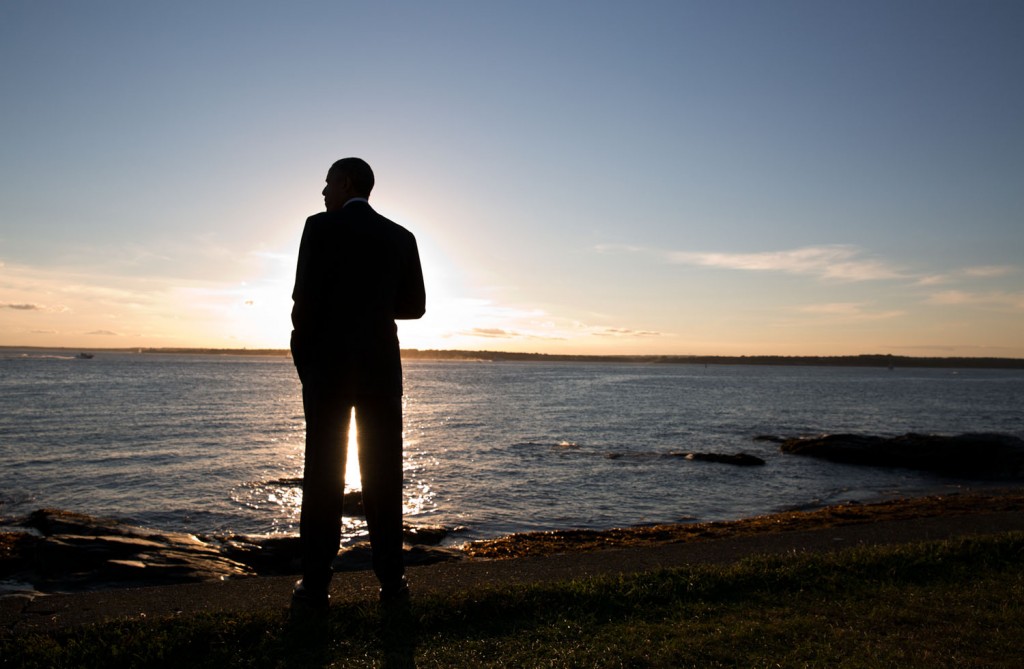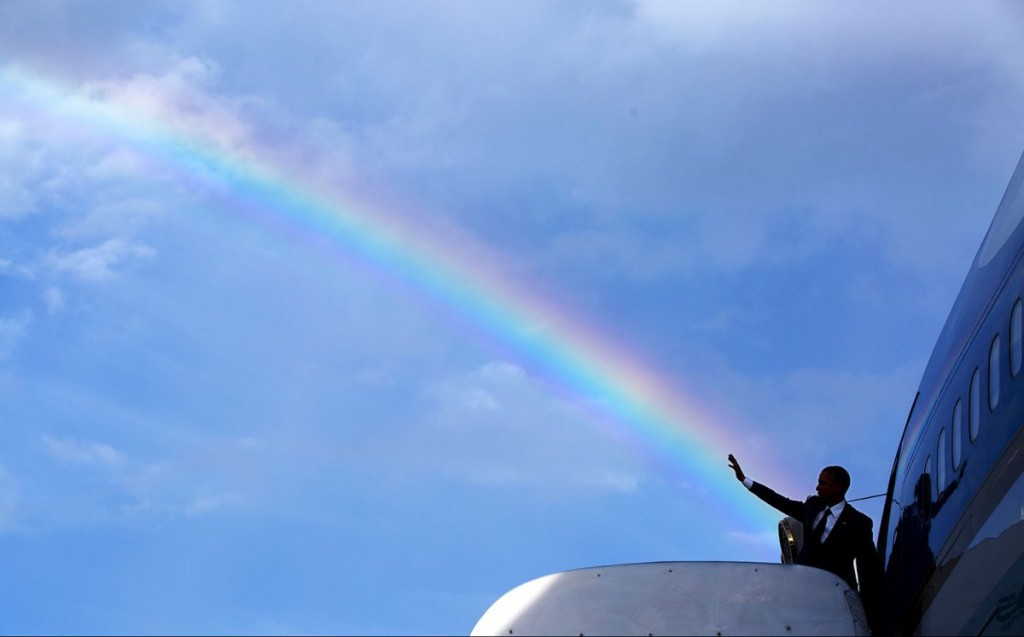The Mind of the President
David Hazony writes in The Tower:
I. Spin is the Opposite of Policy
Whoever said that truth always wins out hasn’t spent much time in Washington. In this town of majestic monuments and post-adolescent ambition-addicts, where the campaign never ends and only impotence is considered unseemly, truth is a butterfly in a mist of acid rain. It’s hard to catch, harder still to save.
Successful leaders have always been adept at deception, of course. To say politicians are liars is to state a truism and to ignore the unpleasant fact that sometimes one must deceive in order to achieve.
But in the last couple of years, something seems different, especially relating to the Obama administration’s signature policy initiative of its second term: The nuclear deal with Iran.
Two recent devastating profiles—one of President Barack Obama by Jeffrey Goldberg in The Atlantic and the other of Obama’s communications chief Ben Rhodes by David Samuels in The New York Times Magazine—have revealed a kaleidoscope of mendacity so sophisticated, creative, consuming, and substantively boundless as to give rise to a sense that something essential has changed in the relationship between truth and falsehood, between the actual policies of an administration and its efforts to sell them.
At a deep level, spin displaced policy. Not only were key promises in the deal’s favor knowingly fabricated for the purpose of persuasion; not only were the scope and ambitions of the deal, the timeline of when talks began, the internal dynamics of the regime in Iran, and the priorities driving the American side during each stage willfully distorted; not only were journalists and experts whose entire reputations should have been at stake enlisted in the government’s sorcery; not only were official records doctored; but the process of decision-making within the administration appears to have been short-circuited as well.
Members of the cabinet had little if any input. Indeed, in some cases their presence was entirely intended to misdirect the public’s understanding of the worldview behind the policy. Implementation of the president’s intentions was delegated, instead, to a staffer with the portentous title of Deputy National Security Advisor for Strategic Communications.
Obama and Rhodes, March 2012. Photo: Pete Souza / White House
The “deal” with Iran that was concluded in July 2015 was not even exactly a deal. The document, called the Joint Comprehensive Plan of Action, was never actually signed, even as the administration continued to insist that the deal was “not based on trust.” The version approved by the Iranian parliament, and the provisions described by Iran’s leaders, were different from those submitted to Congress and the American people. We were assured that Congress would be given a say, but the nature of the say included a truncated process, suppression of side deals, and a vote in which two-thirds of members were required to override a veto and stop the implementation, which is very different from the two-thirds of the Senate required to approve treaties.
To top it all off, in key parts of the document—where the administration’s long-promised “snap-back sanctions” purportedly appeared—the text actually included the Iranians’ express rejection of the concept, declaring that the entire deal would be off if sanctions were restored. Meaning “snap-back sanctions” were never agreed to. Meaning a central plank of the agreement wasn’t really part of the deal at all.
Taken together, this amounted to a grand deception, a Big Lie of astonishing proportions and complexity aimed at deceiving the public about both the intentions and dynamics of the foremost foreign policy initiative of the Obama presidency.
And yet, all the focus on the Big Lie that has emerged since the publication of these two essays risks obscuring something arguably more important: the decision to make the deal in the first place. What we ended up with, we have only now begun to understand, amounts to a massive shift in thinking about America’s role in the world, the ultimate aim of which was hidden from public view, as was the core philosophy that motivated it.
This too was kept secret, though nothing about the Iran deal makes sense without it.
II. Getting Out
Because the true purpose of the Iran deal was never articulated, and because the deal’s logic seemed so difficult to swallow (flooding a serial violator of nuclear treaties and international humanitarian law with money, power and legitimacy in exchange for a promise to hold off its nuclear work for a few years is a self-evidently bad idea), the battle against the deal included a fair amount of speculation.
Some argued that a general entente with Iran was the goal, a historical transformation of America’s greatest enemy into a kind of partner—and that the President had made up his mind about it very early in the administration, even as early as his first year in office. They pointed to his famous 2009 Cairo University speech, when he signaled to the Muslim world that he was ready to offer “A New Beginning,” as the speech was titled. “Rather than remain trapped in the past, I’ve made it clear to Iran’s leaders and people that my country is prepared to move forward,” he said, adding that “any nation—including Iran—should have the right to access peaceful nuclear power if it complies with its responsibilities under the nuclear Non-Proliferation Treaty.” They also pointed to the President’s bizarre failure to support, even symbolically, the 2009 Green Revolution, when tens of thousands of Iranians took to the streets in the first real moment of hope for overthrowing the most dangerous totalitarian, anti-American regime on earth.
According to this line of reasoning, the administration was determined to withdraw from the Middle East, and the best way to do that was to break its decades-long commitments to its internally conflicted and inconsistent Sunni allies, as well as to Israel, all of whom saw Iranian expansionism as the greatest threat to their security. To achieve this, Obama would do the opposite of what they wanted: Effectively hand over power and responsibility to Tehran. This was expressed in the gradual ceding of power in Iraq to Iran-backed Shiite militias (a process documented by Michael Pregent in the Tower), as well as turning a blind eye to Hezbollah’s increasing dominance of southern Lebanon and the deployment of Iranian troops and proxies in Syria and Yemen. Eventually, it would also mean giving up on the idea of removing Iran’s man in Syria, Bashar Assad, from power.
Aides celebrate as Obama discusses negotiations with Iran. Photo: Pete Souza / White House
Many revelations support this view, such as the secret letters Obama sent to Iranian Supreme Leader Ali Khamenei, telling him that the deal could turn Iran into (as he later put it) a “very successful regional power.”
The point of the Iran deal, it emerges, was to act as the centerpiece of a fundamental change in the architecture of the Middle East. “It’s the center of the arc,” Rhodes tells Samuels. “It’s the possibility of improved relations with adversaries. It’s nonproliferation. So all these threads that the president’s been spinning…for almost a decade, they kind of all converged around Iran.” A similar revelation comes to Samuels from another close adviser: “When I asked Jon Favreau, Obama’s lead speechwriter in the 2008 campaign, and a close friend of Rhodes, whether he or Rhodes or the president had ever thought of their individual speeches and policymaking as part of some larger restructuring of the American narrative, he replied, ‘We saw that as our entire job.’”
Restructuring the narrative—but how? Perhaps the most definitive articulation of what was wrong with the old narrative came from Rhodes in his conversation with Goldberg:
The central argument is that by keeping America from immersing itself in the crises of the Middle East, the foreign-policy establishment believes that the president is precipitating our decline. But the president himself takes the opposite view, which is that overextension in the Middle East will ultimately harm our economy, harm our ability to look for other opportunities and to deal with other challenges, and, most important, endanger the lives of American service members for reasons that are not in the direct American national-security interest.
This is, of course, a radically different justification for the deal than anything having to do with the actual Middle East or the people who live there. It is about changing not Iran’s behavior but America’s, preventing its “decline” by changing the story that Americans tell themselves about their purpose in the region and the world. For decades, America kept getting sucked into conflicts in the region, of which the 2003 Iraq War was only the most glaring, disastrous example. (Goldberg: “I told Obama that the Middle East is to his presidency what the Mob is to Corleone, and I started to quote the Al Pacino line: ‘Just when I thought I was out—’ ‘It pulls you back in,’ Obama said, completing the thought.”) This was happening, apparently, because of a web of extremely powerful commitments and narratives that made up the “Washington playbook,” beliefs that were supported by heavy funding from Arab states and pro-Israel Americans. These interests were responsible for a massive strategic investment in the region, and put America in a permanent position of having to take military action.
The only way to free America from the Middle East was to shatter these narratives. This meant rewriting key elements of America’s relationships in the region. No longer could America be relied on to prop up regimes like Hosni Mubarak’s in Egypt, for instance. For the Gulf states, entente with Iran and energy independence would mean shifting the balance of power, weakening them while creating a much stronger antagonist on the other side of the Persian Gulf. “The competition between the Saudis and the Iranians—which has helped to feed proxy wars and chaos in Syria and Iraq and Yemen—requires us to say to our friends as well as to the Iranians that they need to find an effective way to share the neighborhood and institute some sort of cold peace,” Obama told Goldberg. This, of course, triggered alarm across the Gulf states. “There are currently strong indications,” Jonathan Spyer, a senior fellow at the Interdisciplinary Center in Herzliya, wrote in The Tower in early 2014, “that some Gulf countries, and Saudi Arabia in particular, have concluded that the Americans are indeed abandoning the region, or are fully unreliable at a minimum.”
Obama tries to reassure Gulf allies, October, 2015. Photo: Pete Souza / White House
Breaking the Israel narrative would be trickier, since Israel still enjoys the support of a large majority of Americans. The pro-Israel lobby group AIPAC would need to be hobbled, in part through a string of public defeats, of which the Iran deal was only the most glaring; but also through the creation of an alternative “pro-Israel” lobby, J Street, which re-interpreted support for Israel as acting in opposition to its policies and convincing American Jews, many of whom hadn’t really felt a bond with the Israeli government in decades, that it was reasonable to help Israel by urging the U.S. to put pressure on it. J Street, which claimed to be focused on the Palestinian conflict, oddly threw the weight of its Jewish-aimed resources at supporting the Iran deal (we now know it received significant funding to this end from the administration’s go-to nonprofit, the Ploughshares Fund)—despite the fact that the overwhelming majority of Israelis, including most of their elected leaders, thought the deal was a disaster. The existence of J Street would help shatter the belief that presidents were somehow obligated to follow the dictates of the “Israel Lobby.” Obama was crowned the “first Jewish president” (by none other than Goldberg) in part because of his ability to capitalize on the strong anti-Netanyahu sentiment held by many American Jews on the Left and spin it as a form of Judaism.
In this sense, the public clash between Obama and Netanyahu over the Iran deal proved useful for a president who expressly sought the creation of “daylight” between America and Israel. Netanyahu may have been right to protest, but there can be no question that the White House did little to avoid the clash, initiating a virulent attack against what Secretary of State John Kerry called “massive” growth in settlements (there was nothing of the sort), directing administration officials to boycott Netanyahu’s speech to Congress, and calling him “chickenshit.” At the same time, by maintaining military aid and cooperation with Israel, and by occasionally voicing his commitment to Israel’s security, Obama could still claim to be pro-Israel while in fact empowering its greatest enemy.
Obama and Netanyahu, May 2009. Photo: Lawrence Jackson / White House
All of this, we have come to understand, was not really for the good of Israel or the Middle East, or for bolstering America’s strength or credibility in the region. Rather, it was out of a belief that American disengagement required the unraveling of prior commitments. “By eliminating the fuss about Iran’s nuclear program,” Samuels concludes, “the administration hoped to eliminate a source of structural tension between the two countries, which would create the space for America to disentangle itself from its established system of alliances with countries like Saudi Arabia, Egypt, Israel, and Turkey. With one bold move, the administration would effectively begin the process of a large-scale disengagement from the Middle East.”
III. The Wrong Side of History
Why do this? The old narratives, we were told, had brought us the Iraq War, which didn’t turn out very well. But the failures of Iraq, in and of themselves, do not fully explain the attempt to revolutionize America’s position in the world. What was the new narrative? What, in other words, was the vision for America that would prevail once the old order was broken?
What emerges from all the revelations about the President’s mind is a sense that there really is a coherent positive vision—inarticulate, but motivating nonetheless—reflected in a kind of unquenched optimism, an audacious hope he was trying, perhaps vainly, to realize.
It is a dream of a better world. One where reason guides the course of events.
There is so much to hope for. But the world keeps disappointing. Obama never gave a speech where he laid it all out explicitly (had he done so, Leon Panetta tells Samuels, “they’d get the [expletive] kicked out of them”), but we do find many clues in the President’s interviews and speeches. The Middle East is, we learn, locked in “tribalism,” a term that Goldberg presents as evidence of the president’s intellectualism but is in fact a horrible cliché. We also hear, frequently, that the region is riven by “ancient hatreds” between Sunnis and Shiites and Kurds and Alawites and Turks and Jews and God knows what else. The purpose of the 2009 Cairo University speech, he told Goldberg, was to trigger a discussion, [to] create space for Muslims to address the real problems they are confronting—problems of governance, and the fact that some currents of Islam have not gone through a reformation that would help people adapt their religious doctrines to modernity. My thought was, I would communicate that the U.S. is not standing in the way of this progress, that we would help, in whatever way possible, to advance the goals of a practical, successful Arab agenda that provided a better life for ordinary people.
“Obama believes that history has sides,” concludes Goldberg, “and that America’s adversaries—and some of its putative allies—have situated themselves on the wrong one, a place where tribalism, fundamentalism, sectarianism, and militarism still flourish. What they don’t understand is that history is bending in his direction.”
And what is that direction?
The answer might be as simple as this: Obama, it seems, adheres to an ultra-rationalist vision of the sort we have seen in the editorial page of The New York Times, that same simple-minded pseudo-intellectual drivel that got all of us who have actually seen how the world works to wish that our professors back in college really had gotten off campus once in a while: The belief that the central arc of human history is the victory of reason over unreason; that in politics the answers are already there, plain as day, and only those blinded by irrationality can’t see them. According to this view, enlightenment is an unstoppable process, and history moves only in one direction—from dark to light, to progress, to multilateralism, to international institutions and accords and working things out, not on the battlefield but in the conference room. That history, as we have known it for millennia, is heading to a peaceable and rational end.
This worldview, of course, is not new; it’s been circulating the halls of academia for hundreds of years, and, like any political religion, constantly trying to gain power. But by the middle of the 20th century, the infinite hell-vortex of two world wars convinced most normal people that history could go many ways, not all of which were particularly enlightening, and that the West’s ultimate survival required a certain intellectual humility and a heavy investment in learning about the world. The schools of thought that emerged, the different kinds of realists and internationalists, all tried to learn from the failure of rationalism in world affairs. Very few people who still held on to the belief in the Inexorable March of History Towards Reason could be found in actual positions of responsibility.
Photo: Pete Souza / White House
For utopian rationalists, however, political events are interpreted through a prism that makes getting things right easy. As long as you’re heading the right way, you’ll be okay.
The word “rationalist” is a little confusing. In fact, there are two kinds of rationalists. One kind believes in a dynamic intellectual process of generating ideas, testing them against reality, leading to better understanding. We can call this rationalism, or the scientific method, or just being a smart person. And then there is the other kind: People who believe that the world’s problems will be solved when everyone stops fighting and starts talking, because the answers are obvious once your mind is freed of irrational things like tribe, religion, or the past. The former type has an acute appreciation for the limits of his knowledge and, accordingly, surrounds himself with people who bring a wealth of experience into a constructive conversation, and consider angles and implications, laying the groundwork for a good decision. The latter type, however, despises such discussion, viewing it as an unnecessary, even bureaucratic, constraint on his power. His instinct is to resist the whole process. The answers are obvious, and anyone who pushes back is not just wrong but worthy of ridicule: Ignorant, a “know-nothing” (Rhodes), an advocate for (in Obama’s words) “doing stupid shit.”
This is not very scientific, of course. It is much more like faith—faith in reason, and in its glorified human intermediaries, who provide answers so true as to obviate the process of truth-seeking. The hard work, rather, is in the presentation, the eloquent language, the spin. In finding the right words that’ll help people see it.
Obama dreams of a better world. Photo: Pete Souza / White House
Reason, progress, tribalism, ignorance, ancient hatreds, the wrong side of history: Throughout his speeches and interviews on both foreign and domestic policy, the language Obama uses is filled with ultra-rationalist bromides—and red flags to anyone sensitive to their perilousness. They evoke the specter of unenlightened people clinging to crazy attachments and descending into violence. What this image does is make it possible to throw a blanket over the whole Middle East and justify getting the hell out. To remove questions of power, of the motivations of individual leaders and whole regimes, of complexity, of choosing sides in a fight.
They are, in fact, the foreign-policy equivalent of Obama’s 2008 campaign gaffe, when he spoke derisively of Americans who “cling to their guns and their religion”—the two things that symbolize, in his view, every evil in American life: Power and faith.
